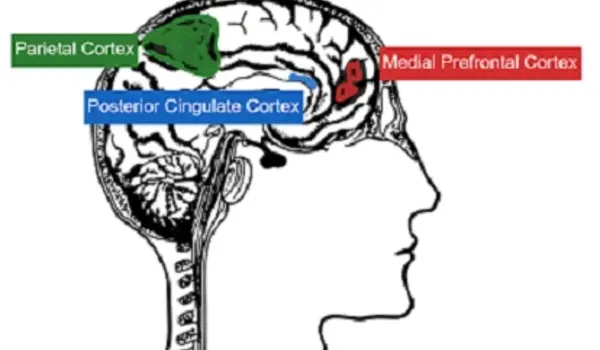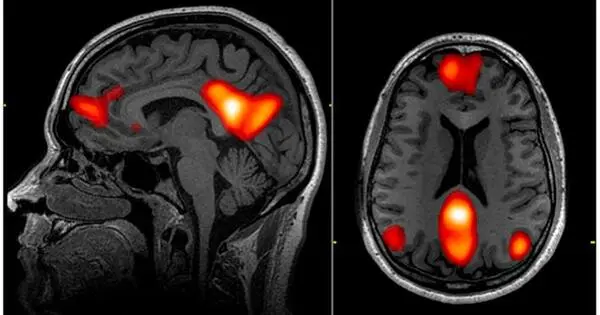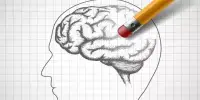Brain activity in mice during peaceful waking implies the animals are fantasizing about a recent vision. Daydreaming about a recently seen image predicted how the brain will react to it in the future. The findings suggest that daydreaming may play a role in brain plasticity.
You’re sitting calmly when your mind abruptly tunes out the world and drifts to someplace altogether different – possibly a recent experience or an old recollection. You were only daydreaming.
Despite the prevalence of this experience, neuroscientists have been unable to answer the question of what happens in the brain while daydreaming. Now, a study in mice, published in Nature, has brought a team led by researchers at Harvard Medical School one step closer to figuring it out.
The researchers monitored the activity of neurons in the visual cortex of mice’s brains while the animals were awake and silent. They discovered that these neurons occasionally fired in a pattern similar to one seen when a mouse gazed at an actual image, implying that the mouse was thinking – or daydreaming – about the image. Furthermore, the patterns of activity during a mouse’s first few daydreams of the day predicted how the brain’s response to the image would vary over time.
The research provides tantalizing, if preliminary, evidence that daydreams can shape the brain’s future response to what it sees. This causal relationship needs to be confirmed in further research, the team cautioned, but the results offer an intriguing clue that daydreams during quiet waking may play a role in brain plasticity — the brain’s ability to remodel itself in response to new experiences.
“We wanted to know how this daydreaming process occurred on a neurobiological level, and whether these moments of quiet reflection could be important for learning and memory,” said lead author Nghia Nguyen, a PhD student in neurobiology in the Blavatnik Institute at HMS.
My lab became interested in whether we could record from enough neurons in the visual cortex to understand what exactly the mouse is remembering – and then connect that information to brain plasticity.
Mark Andermann
An overlooked brain region
Scientists have spent considerable time studying how neurons replay past events to form memories and map the physical environment in the hippocampus, a seahorse-shaped brain region that plays a key role in memory and spatial navigation. By contrast, there has been little research on the replay of neurons in other brain regions, including the visual cortex. Such efforts would provide valuable insights about how visual memories are formed.
“My lab became interested in whether we could record from enough neurons in the visual cortex to understand what exactly the mouse is remembering – and then connect that information to brain plasticity,” said senior author Mark Andermann, professor of medicine at Beth Israel Deaconess Medical Center, and professor of neurobiology at HMS.
In the new study, the researchers repeatedly showed mice one of two images, each consisting of a different checkerboard pattern of gray and dappled black and white squares. Between images, the mice spent a minute looking at a gray screen. The team simultaneously recorded activity from around 7,000 neurons in the visual cortex.
The researchers found that when a mouse looked at an image, the neurons fired in a specific pattern, and the patterns were different enough to discern image one from image two. More important, when a mouse looked at the gray screen between images, the neurons sometimes fired in a similar, but not identical, pattern, as when the mouse looked at the image, a sign that it was daydreaming about the image. These daydreams occurred only when mice were relaxed, characterized by calm behavior and small pupils.
Unsurprisingly, mice daydreamed more about the most recent image — and they had more daydreams at the beginning of the day than at the end, when they had already seen each image dozens of times.But what the researchers found next was completely unexpected.

Throughout the day, and across days, the activity patterns seen when the mice looked at the images changed — what neuroscientists call “representational drift.” Yet this drift wasn’t random. Over time, the patterns associated with the images became even more different from each other, until each involved an almost entirely separate set of neurons. Notably, the pattern seen during a mouse’s first few daydreams about an image predicted what the pattern would become when the mouse looked at the image later.
“There’s drift in how the brain responds to the same image over time, and these early daydreams can predict where the drift is going,” Andermann said. Finally, the researchers found that the visual cortex daydreams occurred at the same time as replay activity occurred in the hippocampus, suggesting that the two brain regions were communicating during these daydreams.
To sit, perchance to daydream
Based on the results of the study, the researchers suspect that these daydreams may be actively involved in brain plasticity.
“When you see two different images many times, it becomes important to discriminate between them. Our findings suggest that daydreaming may guide this process by steering the neural patterns associated with the two images away from each other,” Nguyen said, while noting that this relationship needs to be confirmed.
Nguyen added that learning to differentiate between the images should help the mouse respond to each image with more specificity in the future. These observations align with a growing body of evidence in rodents and humans that entering a state of quiet wakefulness after an experience can improve learning and memory.
Next, the researchers plan to use their imaging tools to visualize the connections between individual neurons in the visual cortex and to examine how these connections change when the brain “sees” an image.
“We were chasing this 99 percent of unexplored brain activity and discovered that there’s so much richness in the visual cortex that nobody knew anything about,” Andermann said.
Whether daydreams in people involve similar activity patterns in the visual cortex is an open question, and the answer will require additional experiments. However, there is preliminary evidence that an analogous process occurs in humans when they recall visual imagery.
Randy Buckner, the Sosland Family Professor of Psychology and of Neuroscience at Harvard University, has shown that brain activity in the visual cortex increases when people are asked to recall an image in detail. Other studies have recorded flurries of electrical activity in the visual cortex and the hippocampus during such recall.
For the researchers, the results of their study and others suggest that it may be important to make space for moments of quiet waking that lead to daydreams. For a mouse, this may mean taking a pause from looking at a series of images and, for a human, this could mean taking a break from scrolling on a smartphone.
“We feel pretty confident that if you never give yourself any awake downtime, you’re not going to have as many of these daydream events, which may be important for brain plasticity,” Andermann said.















